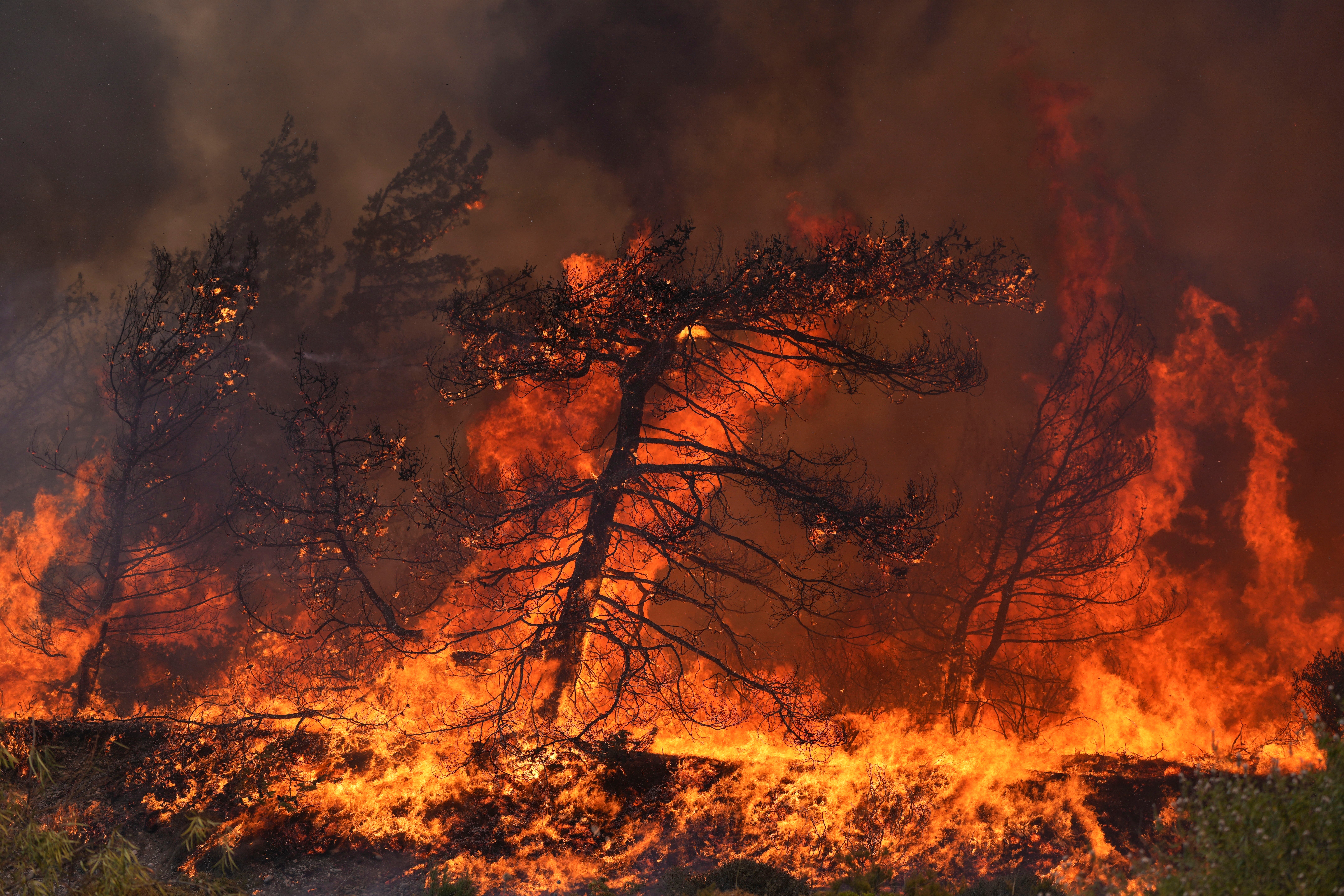Study shows summer 2023 was hottest in 2,000 years
The coldest reconstructed summer was in 536 AD, which was influenced by a large volcanic eruption that cooled the surface of the planet

Your support helps us to tell the story
From reproductive rights to climate change to Big Tech, The Independent is on the ground when the story is developing. Whether it's investigating the financials of Elon Musk's pro-Trump PAC or producing our latest documentary, 'The A Word', which shines a light on the American women fighting for reproductive rights, we know how important it is to parse out the facts from the messaging.
At such a critical moment in US history, we need reporters on the ground. Your donation allows us to keep sending journalists to speak to both sides of the story.
The Independent is trusted by Americans across the entire political spectrum. And unlike many other quality news outlets, we choose not to lock Americans out of our reporting and analysis with paywalls. We believe quality journalism should be available to everyone, paid for by those who can afford it.
Your support makes all the difference.Summer 2023 was the hottest in the northern hemisphere over the past 2,000 years, researchers have said.
An assessment by scientists comparing last year to the past two millennia using tree ring data found that the summer months of June, July and August were at least 0.5C hotter than the extremes of a naturally-varying climate.
And 2023 was nearly 4C hotter than the coldest summer in the northern hemisphere in the past two thousand years, as an El Nino weather pattern in the Pacific – which drives up temperatures – amplified the impact of human-caused global warming.
The analysis in the context of the sweep of history shows how “dramatic” recent global warming is, one of the researchers said.
Scientists used observations from weather stations and compared limited early records with tree ring data to show that 2023 summer temperatures over northern hemisphere land were 2.07C warmer than for 1850-1900.
The 1850-1900 period is used as a baseline for the pre-industrial period to assess the global warming that has occurred as a result of human activity such as burning fossil fuels, including in the Paris Agreement under which countries have agreed to limit temperature rises to 1.5C.
The study, published in the journal Nature, warns that in the northern hemisphere, the limit has already been breached.
And the research extended temperatures back over 2,000 years using the tree-ring data, as well as approximating the variability in the climate caused by El Nino and its opposite, La Nina.
It showed that the summer of 2023 exceeded the long-term pre-instrumental average from 1AD to 1890 by 2.2C.
The coldest reconstructed summer was in 536 AD, which was influenced by a large volcanic eruption that cooled the surface of the planet by putting out large amounts of aerosols that block the sun.

That year’s summer was 3.93C colder than 2023, the research by the scientists from the University of Cambridge and the Johannes Gutenberg University Mainz found.
The naturally warmest summer in the record, which occurred in a warm period under the Roman empire in 246AD, was 1.19C cooler than last summer.
And even if the range of uncertainty for the temperature is taken into account, 2023 was still at least more than 0.5C warmer than that year, the study said.
Study co-author Professor Ulf Buntgen, from Cambridge’s Department of Geography, said: “When you look at the long sweep of history, you can see just how dramatic recent global warming is.
“2023 was an exceptionally hot year, and this trend will continue unless we dramatically reduce greenhouse gas emissions.”
Tree-ring data shows cooler periods over the past 2,000 years, such as “little ice ages” in the sixth and 19th centuries, followed large volcanic eruptions, while warmer periods can be attributed to El Nino climate patterns.
Professor Jan Esper, from the Johannes Gutenberg University Mainz in Germany, said: “It’s true that the climate is always changing, but the warming in 2023, caused by greenhouse gases, is additionally amplified by El Nino conditions, so we end up with longer and more severe heat waves and extended periods of drought.
“When you look at the big picture, it shows just how urgent it is that we reduce greenhouse gas emissions immediately.”
The current El Nino period is forecast to extend into early summer 2024, suggesting that this year will see temperature records broken again, the study warned.
Join our commenting forum
Join thought-provoking conversations, follow other Independent readers and see their replies
Comments